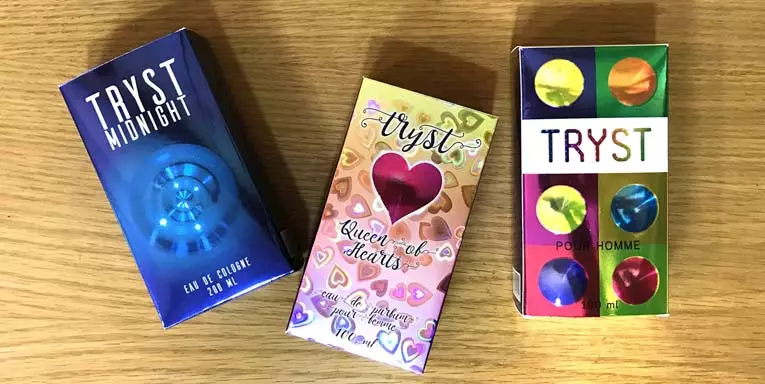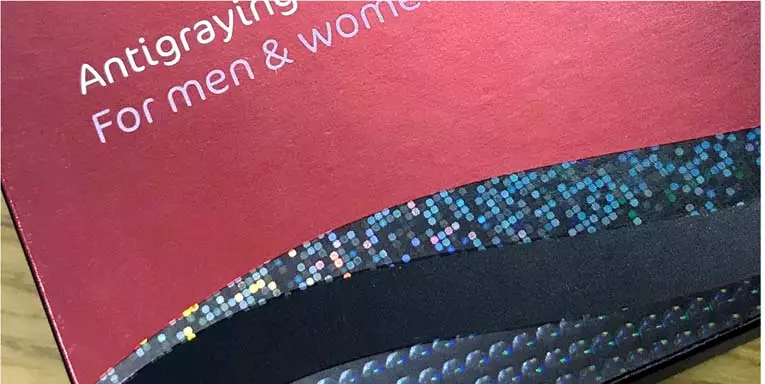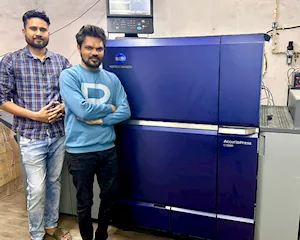Pragati's innovative print techniques for packaging
With the advancements in packaging, P Narendra of Pragati Pack tells a gathering of AIFMP members in Nagpur on 7 July how innovative print techniques can enhance the pack. He explains how packaging can ensure brands have many new and exciting ways to deliver better value for money and higher engagement to the consumer
11 Jul 2018 | By PrintWeek India
Printing might seem like a tiny component of the marketing puzzle in a large campaign for a particular brand but it is important to guarantee full attention. P Narendra of Pragati Pack feels that "the focus on packaging appearance at the point-of-sale is huge and new and innovative print techniques have revolutionised the possibilities available to companies and enable each one of them to promote their brands in an original way."
Today, a number of options are available when it comes to innovative printing techniques. P Narendra splits their necessity in four categories: on-shelf appeal, anti-counterfeiting solutions, eco-friendly solutions and smart packaging.
On-shelf appeal
 The primary purpose of packaging is to preserve the product, but packaging can be used by companies as an instrument for promoting the product as well. A good packaging helps to identify and differentiate products to the consumers. "The sheer size of the packaging industry along with the increasing consumer choices suggests that it might be hard to make a product stand out on the shelf," says Narendra. It is the special shape of packaging that can make it stand out from the predominantly cuboid competition on the shelf. "A great example is the iconic Toblerone pack for the legendary triangular Swiss chocolate," says Narendra. Then there is the 360-degree window carton that can create an all-round visibility of the product or the magnetic flip-top packing box which not only has a luxurious feel to it but also "provides a sophisticated opening experience," says Narendra.
The primary purpose of packaging is to preserve the product, but packaging can be used by companies as an instrument for promoting the product as well. A good packaging helps to identify and differentiate products to the consumers. "The sheer size of the packaging industry along with the increasing consumer choices suggests that it might be hard to make a product stand out on the shelf," says Narendra. It is the special shape of packaging that can make it stand out from the predominantly cuboid competition on the shelf. "A great example is the iconic Toblerone pack for the legendary triangular Swiss chocolate," says Narendra. Then there is the 360-degree window carton that can create an all-round visibility of the product or the magnetic flip-top packing box which not only has a luxurious feel to it but also "provides a sophisticated opening experience," says Narendra.
What further enhances the appeal of the packaging box is the use of material and effects. "Packaging material has a strong impact on buying behaviour," says Narendra. "The use of metallic substrates has become a part of the mainstream. There is a need for newer and more eye-catching solutions. At the same time, the new solution must possess the scalability of getting deployed in projects with large quantities." The holographic lens is used in register with printed objects for eye-catching effects. Then there is the metallic, pearlescent and iridescent effect achieved through gravure, refractive patterns where the movement is seen on the patterns when the view angle of the packaging changes, foil stamping with 3D blocks and the contrast between gloss and matt that can be achieved through the use of varnishes. The feel of the packaging also plays an important role. Different surfaces should be felt while holding the packaging, making it particularly effective in picking out certain elements of an image. "It was found that a pack with multi-sensorial impressions have a recall of 60%," says Narendra. If only a single sensory impression is conveyed, the recall value is halved. The use of tactile and olfactory senses can create an additional impact.
Anti-counterfeiting solutions
In today's scenario, counterfeiting is believed to be causing industry-wide losses of 15-30%. This figure might be true for the sales but what probably doesn't get accounted for in figures is the adverse impact on the brand. "Use of anti-counterfeiting measures can be two-fold: overt and covert," says Narendra. The overt measures can be utilised by everyone, including the end user, for verification of the product. These measures can add different levels of visual appeal too. "Many overt anti-counterfeiting measures should be seen as adding to the shelf appeal of the product," says Narendra.
These measures, according to Narendra, includes holographic varnishes, micro-embossed patterns, reflection embossing where the different text is visible at different viewing angles and invisible inks that react to either the sunlight or the body temperature providing an easy check for the end user. The covert measures are effects which are not visible to the end user. These can be verified only by authorised personnel using different methods like hidden images or text that can only be visible through a special lens, anti-copy where photocopying reveals the hidden text, encoded values that are known only to authorised personnel and that change with every batch.
Eco-friendly solutions
An environment friendliness of the pack is no more simply at the level of corporate social responsibility (CSR). It has become a legal mandate now. In many cases, government policies and consumer preferences are demanding that brands implement sustainable packaging practices to reduce the environmental impact. "Many solutions that are required for making packaging attractive laminate plastic to paper. This increases the difficulty of recycling the pack," says Narendra. "There are eco-friendly and eye-catching effects that are being introduced. One of them is the cast and cure that creates holographic effects by utilising only varnish. Other solutions include gravure for laying down metallic or iridescent effects and metal transfer to the board."
Smart packaging
This new trend in packaging enhances its functionality and involves a combination of specialised materials, science and technology. Various features can be embedded into packaging in order to provide traceability for the brand owner, enable interaction with the end user, ensure supply chain compliance and at the same time be able to provide the consumer with additional information about the product.
Narendra feels that the implementation requires two major components. An ability to mark each pack with unique data that can be supplied by the printer or added at the packing site through laser or inkjet technology. The second component involves enabling the IT systems to utilise the above unique data. This can be done with back-end systems that can integrate with Enterprise Resource Planning (ERP) and the end-users. “It can further result in a user interaction that can begin with a simple SMS and lead all the way to smartphone applications to collect information,” concludes Narendra.
















 See All
See All